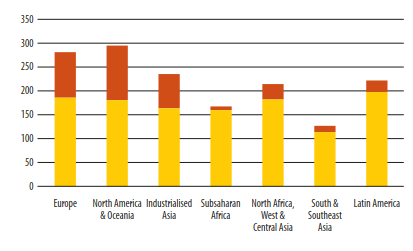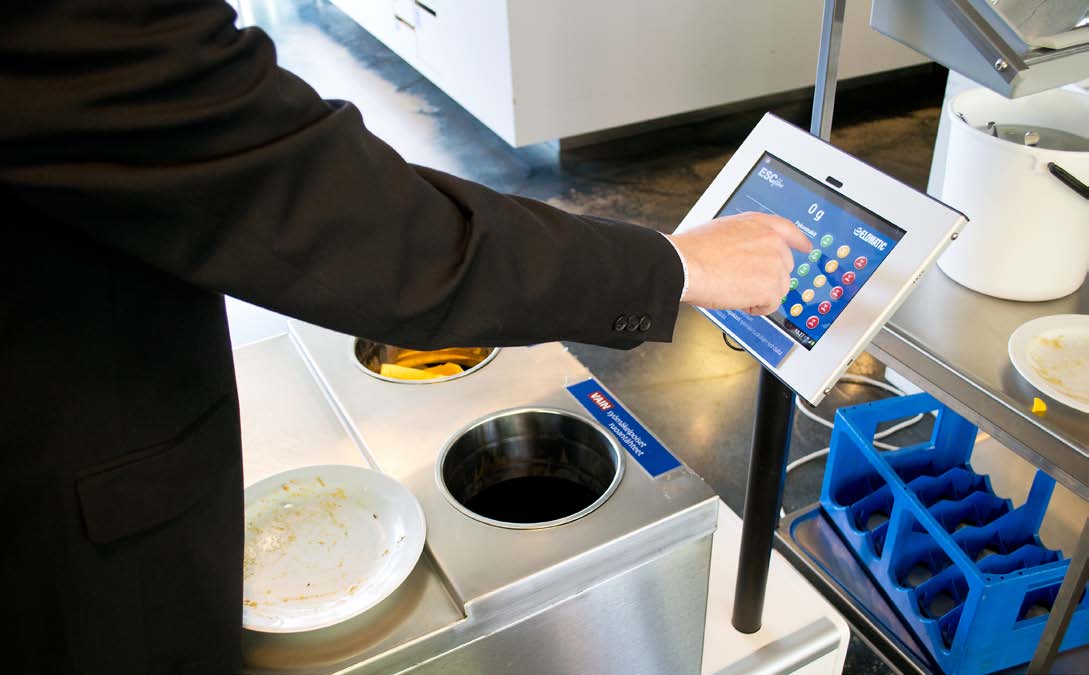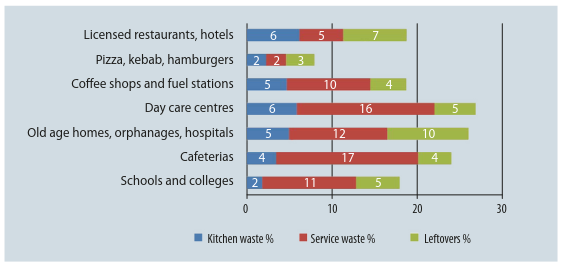24/10/2019
Reducing food waste a matter of urgency
Globally about 1300 million tonnes of food is discarded as waste every year. This clearly has detrimental financial, social and ecological implications. In order to preserve natural resources and live sustainable lifestyles the reduction of food waste has become a decisive battleground. A key aspect is changing consumer behaviour, which in turn requires that waste data is gathered and communicated to consumers.
The Food and Agriculture Organization of the United Nations (FAO) defines food waste as the ‘masses of food lost or wasted in the part of food chains leading to edible products going to human consumption’. By this definition food that is extracted from the human food chain and reused elsewhere is also considered waste.
Food waste is created in agricultural production, the foodstuffs industry, retailing, distribution, and consumption. According to FAO 25–30 % of global food production is lost in the human food chain, while the World Food Programme indicates that the current level of food production is sufficient to cover the nutritional needs of the entire global human population.
It is interesting to note that food waste levels do not differ much between industrialised and developing nations; both lie at close to a third of the food produced. An important difference, however, is that in industrial countries households contribute significantly to waste creation while in developing nations the majority of the losses occur during storage and transportation (see Diagram 1).



The Agrifood Research Finland Institute (MTT) has conducted research on food waste and quality in Finland for the entire human food chain in its Foodspill study. The results are displayed in Table 1. It indicates that households create the most food waste with the total food waste in the human food chain being about 400 million kilograms. This translates to roughly 400 million euros a year lost as waste.
In Finland the climate effects of household waste corresponds to the carbon dioxide emissions of about 100 000 passenger vehicles. Finnish household waste predominantly consists of vegetables, potatoes, home-cooked food, dairy products, bread and fruit.
Environmental impact of food production
Food production, preparation, transport and consumption result in emissions. It follows that if edible food ends as waste the emissions were caused in vain. In addition to raw materials, other natural resources such as fresh water, energy and soil are also used in the process. As much as a quarter of all greenhouse gas emissions resulting from transport are attributed to food production.
It is clear that food production affects the environment. There are, however, large differences between different food types, with plant-based foods burdening the environment less than meat-based foods. Either way, reducing food waste has a direct positive environmental impact and also reduces food production related emissions by reducing food demand.

The EU Commission has taken the lead in food waste reduction by encouraging EU member states to halve their food waste by 2025. It is also drawing up guidelines and best practices in this regard, which can be implemented throughout the EU. One such a measure is raising the value placed on food and food products.
In Finland there are already several organizations and digital publications that report on food waste and provide hints on how it can be minimized. The Finnish Ministry of the Environment’s programs for sustainable consumption and production also aim at identifying working food waste reduction methods. Efforts as such as being made, but more needs to be done.
Consumers can bring about change
By making sustainable consumption choices consumers can directly affect how producers and markets operate. However, in order to make informed and environmentally-friendly consumption decisions they require accurate and easily understandable information regarding waste and its environmental impacts.
Waste is easier to understand if it can be concretised with illustrative and comparable measurement data. This data eases decision making and can be used to shape opinions and attitudes.
Corporates also need to take responsibility to inform employees of their consumption choices. Elomatic has for this purpose developed a waste measurement system called ESCflow that is used in the Elomatic cafeteria.
ESCflow measures the quantity of leftover food per employee and chosen dish and provides the employees with direct consumption feedback upon leaving the cafeteria. The diner can also provide feedback to the caterer regarding the quality of the food. This in turn allows the caterer to improve food selection and quality. The higher the food quality and the more diners appreciate the food they are served, the less likely they are to discard food as waste.
The data gathered by the device can be displayed in real time in a web browser. At Elomatic this data is gathered on a weekly basis and displayed on a wall in the cafeteria for comparison. The core idea is to make the diners aware of the amount of food waste they produce and to affect their consumption.
In order for humans to reduce food waste and start living more sustainable lifestyles every entity in the human food chain has to play its part. Producers, logistics companies, storage providers, retailers, restaurateurs, corporates, governments and consumers all have a role to play.
Consumers have the power to affect all the other members in the chain with their choices. With the right information at their fingertips they can change the way food is produced, transported and consumed and preserve natural resources for future generations.
Waste is easier to understand if it can be concretised with illustrative and comparable measurement data

The original text has published in our 1/2015 Top Engineer magazine

